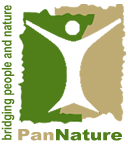Vietnam is recognized as one of the world's most biodiverse…
Launching of the Publication “Field Guide to the Large Mammals of Vietnam”
Hanoi. July 9th, 2008 – In Hanoi Press Club, People and Nature Reconciliation has launched the publication “Field Guide to the Large Mammals of Vietnam”. This publication is printed in both Vietnamese and English languages with financial support from the World Bank/Netherlands Partnership Program and the Sida Environment Fund (SEF). Vietnam is rated as one of the most important countries for mammal conservation. At present, about 300 terrestrial and sea species and sub-species have been discovered and described. Especially during the 1990s, five mammal species were discovered as new records for science, including Saola Pseudoryx nghetinhensis, the Large-altered Muntjac Muntiacus vuquangensis, Truong Son Muntjac Muntiacus truongsonensis, Annamite Striped Rabbit Nesolagus timminsi, and Grey-shanked Douc Langur Pygathrix cinerea. In addition, two other species, Tay Nguyen Civet Viverra tainguyenesis and Otter Civet Cynogale bennetti, are under consideration to be new discoveries. However, like many other wildlife, the number of Vietnam’s mammal populations is seriously decreasing due to hunting, illegal trade, destruction or fragmentation of habitats. Although the Government of Vietnam is committed to biodiversity conservation, the public’s lack of understanding about mammals and their importance in nature is hindering efforts of conservation agencies in preserving the country’s natural resources and protecting wildlife. Moreover, law enforcement is not effective enough as there’s not sufficient investment in protection measures and materials for species identification.

With the aim to inspire appreciation to nature and mammal species of the public, as well as provide a valuable source of reference for university students, researcher, and enforcement agencies in wildlife conservation, PanNature has worked with Dr. John Parr to develop the “Field Guide to Large Mammals of Vietnam”. This project involved over 30 national and international researchers, scientists, and conservationists in the development, consultation, peer reviews, and editing process. Professor Vo Quy of the Center for Natural Resources and Environmental Studies, Hanoi National University, commented: “Vietnam’s biodiversity is increasingly threatened by illegal hunting and trading of wildlife, especially mammals. These problems result from the public’s lack of understanding about mammals and their importance in nature. This is partly due to the scarcity of wildlife publications and, in the case of existing such publications, their insufficient content and attractiveness. The Field Guide to the Large Mammals of Vietnam presents our current understanding of the most prominent large mammals in Vietnam. I strongly believe this Field Guide will be an excellent resource for all readers, not only for those working in nature conservation but for scientists, students and nature enthusiasts”.

Professor Vo Quy and some young Vietnamese conservationists
This publication is printed on 20,5cmx14cm paper size with 256 pages for the Vietnamese version and 250 pages for the English edition. It consists of three main parts: i) Part I: Introduction to Vietnam’s mammals, including the history of mammalogy, diversity, conservation status, and conservation efforts; ii) Part II: Identification details of 127 typical mammal species with 36 colored plates, descriptions of each species, habitats, distribution ranges, and conservation status. This is the main content of the field guide; iii) Part III: Appendices, including full checklist of all species and sub-species of mammals found in Vietnam. The checklist is organized in accordance with the systematics of 14 orders and 42 families of mammals. It includes common names in Vietnamese and English, scientific (Latin) names, protection and conservation status at national and global levels. This part also has illustrations of mammal tracks. “We hope that through this publication, Vietnamese readers will have more information and better understanding about our natural heritage. Consequently, they will be more aware and more responsible in protecting and conserving mammal species”, said Mr. Trinh Le Nguyen of People and Nature Reconciliation. He added: “An important aspect of this publishing project is that all revenue from sales of the publication will be used for producing more nature and conservation-focused resources. By doing so, we can ensure that the Vietnamese public will have better access to information about our country’s rich natural resources”. PanNature would like to thank the Hanoi Press Club for providing logistical support for the launching event of this publication.
For more information about this publication, please contact: Mr. Hoang Xuan Thuy Tel: (04) 556-4001 Ext: 106 Email: thuy@nature.org.vn




Comments (0)